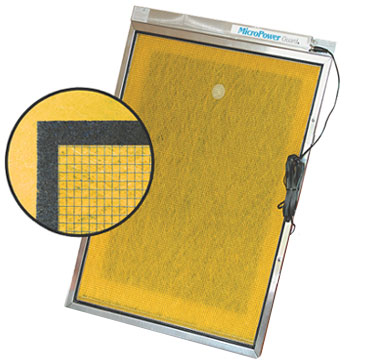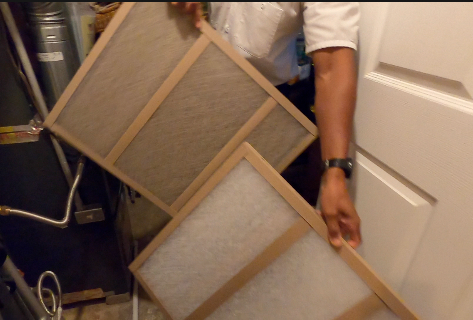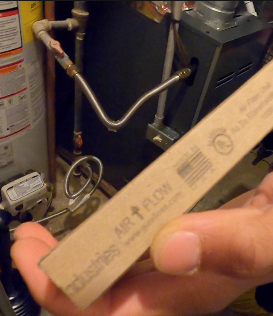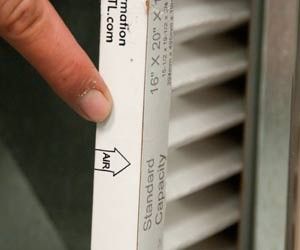According to our technicians, one of the HVAC accessories they can’t live without in their own homes is a MicroPower Guard Air Cleaner.
Many people don’t know what a MicroPower Guard is or how it’s different from a regular filter.
What is a MicroPower Guard Air Cleaner?
The micro power guard is actually an air cleaner, not a filter. It looks like a filter. It has a fiberglass media, however it doesn’t just collect dust on the surface of the media. It actually puts an electrical charge on every one of the fiberglass strands that is in the media and particles stick to it like a magnet picks up metal filings.

Unlike traditional HVAC filters, which rely on physical filtration, electronic air cleaners utilize advanced electrostatic precipitation technology to capture particles as small as 0.01 microns.
At the heart of a micropower guard electronic air cleaner is an electrostatic charging process. As air passes through the unit, airborne particles become charged. These charged particles are then attracted to the media within the air cleaner.
Essentially dust, dirt and allergens are magnetized to the filter. This electrostatic attraction effectively traps the particles, preventing them from circulating back into the air.
Additional benefits include: improved indoor air quality, reduced allergens and respiratory irritants, and enhanced HVAC system performance. By removing contaminants from the air, electronic air cleaners contribute to a cleaner, healthier indoor environment for homeowners and their families.
How Can an Electronic Air Cleaner Help with Seasonal Allergies and Dust?
Seasonal allergies and household dust can be nuisances, affecting comfort and indoor air quality. Electronic air cleaners offer an effective solution.
Electronic air cleaners utilize electrostatic precipitation to charge these allergens as they pass through the unit. The charged particles are then attracted to the filter media, completely removing them from the air stream.
By capturing these allergy-triggering particles, electronic air cleaners help reduce the concentration of airborne allergens in the home, providing relief for allergy sufferers.
Additionally, electronic air cleaners play a vital role in controlling household dust. Dust particles, composed of various materials including skin cells, textile fibers, and soil, can accumulate on surfaces. By capturing dust particles before they settle, electronic air cleaners help minimize dust buildup in the home, reducing the need for frequent cleaning and promoting cleaner indoor air.
MicroPower Guard Electronic Air Cleaner Vs. Traditional HVAC Filters: What’s the difference?
In the realm of home HVAC filtration, there are two primary contenders: traditional HVAC filters and the MicroPower Guard Electronic Air Cleaner. While both serve the common goal of enhancing indoor air quality, they operate very differently.
Traditional HVAC filters, often composed of paper or fiberglass, function by physically trapping airborne particles as air circulates through the system. While adequate for capturing larger particles like dust and debris, they have limitations in effectively capturing smaller, more harmful contaminants such as bacteria, viruses, and smoke particles. This is because the higher amount of filtration will equal less airflow through the filter.
In contrast, the MicroPower Guard Electronic Air Cleaner employs advanced electrostatic technology. As air passes through the unit, airborne particles are electrically charged, causing them to be attracted to media within the cleaner. This electrostatic attraction enables the electronic air cleaner to capture particles as small as 0.01 microns. Traditional filters can’t come close to this amount of filtration. It also allows free airflow without restriction for your furnace blower allowing your HVAC system to operate efficiently.
In summary, while traditional HVAC filters provide a basic level of air filtration, the MicroPower Guard Electronic Air Cleaner represents a significant improvement. They offer homeowners in Johnson County, Kansas, a wonderful solution for maintaining cleaner, healthier indoor air.
Interested in a MicroPower Guard Filter for your home? Click here to schedule a free estimate.



